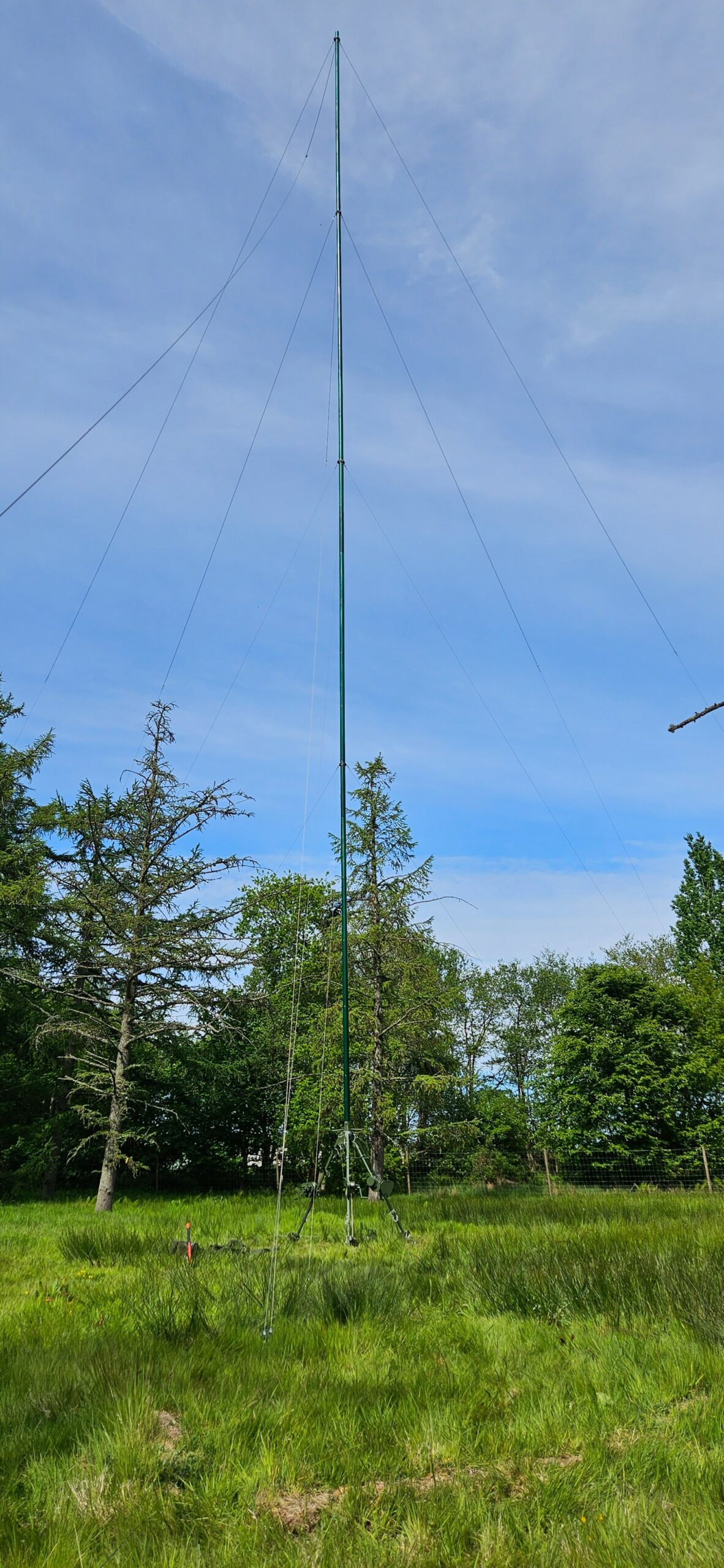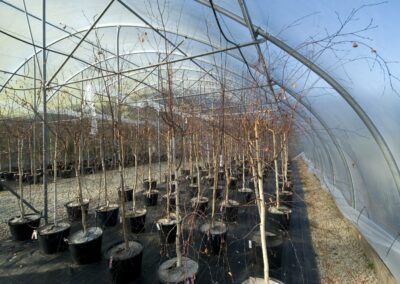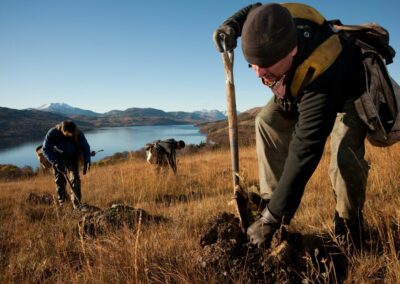Understanding wind storm risks in continuous cover forestry
Project leads Dr Tom Locatelli, Dr Mariella Marzano, Adam Ash | Forest Research; Dr Phil Wilkes | Royal Botanic Gardens, Kew
Lead organisations Forest Research; Royal Botanic Gardens, Kew
Collaborators Forestry and Land Scotland; Forestry England
Project status Active
Project funding 25-26 £244,258.78
Research outcomes Reducing the risk | Adaptation
Context
Modern silviculture promotes maintaining diverse forests, with Continuous Cover Forestry (CCF) offering several ecosystem services including quality timber.
However, knowledge about CCF’s resilience to disturbances- especially windstorms, Europe’s most damaging abiotic threat- is limited. In Britain, severe storms have caused up to 30% forest loss over the past 75 years, but research on windstorm impacts and CCF resilience remains scarce.
Windstorm impacts influence livelihoods and well-being but there is limited understanding of CCF’s potential for reducing these impacts. This project will explore multiple perspectives on cultural attachment to forest species and types, perceptions of wind risk and the feasibility of CCF as a management strategy.
Research aims and objectives
Aim:
Examine cultural attachments, risk perceptions, and tree adaptation to wind risk, integrating social and scientific research.
Objectives:
Understanding how CCF can adapt to reduce wind risk
- Gather and analyse data on wind exposure and airflow through forest canopies across two types of conditions: (a) the transition from even aged conifer monocultures to CCF, and (b) comparing conifer-dominated and broadleaf-dominated CCF.
Develop industry-standard wind risk models
- Use new data to further develop the ForestGALES wind risk model and Decision Support System for application in structurally diverse CCF forests.
Investigate the impact of wind on timber quality in CCF
- Combine wind loading measurements on individual trees with high-resolution LiDAR scans and non-destructive tests, such as acoustic velocity and tree ring analysis, to understand how CCF practices influence wood stiffness and other timber properties under different wind conditions.
Assess the cultural and social dimensions of wind risk
- Conduct social research with forestry stakeholders, including private landowners, policymakers, forest managers, and local communities in areas with a history of diverse forest practices, to explore perceptions of wind damage risk and perspectives on current practices in forest management.
Promote knowledge exchange and true interdisciplinarity
- A central Knowledge Platform will connect the project’s research questions and objectives and help to build a shared understanding of CCF’s feasibility and acceptance under different conditions. This platform will support collaboration amongst all stakeholders, including forest professionals, policymakers, and local community groups such as businesses, residents’ associations, and local NGOs.
Expected outcomes
- Improved forest resilience policies and practices, based on new evidence about how forest structure and species composition influence wind damage risk in CCF systems.
- ForestGALES wind risk model developed for confident use in CCF systems.
- Better forecasting of timber quality and yield, through a deeper understanding of how wind exposure and diverse stand structures affect wood development.
- Stronger decision-making tools for forest managers and policymakers, supporting long-term planning and risk assessment under changing climate and disturbance conditions.
- Increased stakeholder awareness and engagement, with a clearer understanding of current knowledge gaps, management motivations, and behavioural drivers in forestry.
- Wind risk knowledge exchange promoted across the forestry sector, feedback on wind risk technologies shared, and discussions about future solutions to reduce risks and enhance forest resilience supported.
Mast for anemometers – an instrument for measuring wind velocity at or near a tree.
Title image: Crown Copyright. Forestry Commission – Isobel Cameron
Body image: Crown Copyright. Forest Research – Milly Bell
Glossary & Key Terms
Abiotic
Physical and environmental factors.
Acoustic velocity testing
Measures how fast sound waves travel through the wood, providing insights into wood stiffness and potential defects.
Broadleaf
A category of trees that have wide, flat leaves rather than needle-like leaves. A category of trees that have wide, flat leaves rather than needle-like leaves. These trees are usually deciduous and lose their leaves in winter.
Conifer (Pinophyta)
Conifers, or softwood trees, are cone-bearing and usually evergreen trees. They are a distinct group of trees that are economically significant due to their ability to grow quickly even on poor soils and in harsh climates. These trees yield timber that is highly suitable for industrial use, which has led to their widespread planting and management across many countries. Examples of conifer trees found in the UK include Scots pine, Douglas fir, and Norway spruce.
Continuous Cover Forestry (CCF)
A woodland management approach that involves selectively thinning trees to create a diverse forest structure, whilst maintaining canopy cover.
Ecosystem services
The benefits that human beings obtain from ecosystems, contributing to our well-being and a healthy planet. Examples include clean air, food, water, recreation, and raw materials (like wood).
LiDAR
Light Detection and Ranging (LiDAR) is a remote sensing method that uses laser light to measure distances and create detailed 3D representations of surfaces.
Monoculture
Forests made up trees of the same age and from a single species.
Silviculture
Silviculture is the science and practice of cultivating and managing forest stands to ensure their long-term health, productivity, and resilience for various societal needs. It involves activities such as site preparation, regeneration, thinning, pruning, harvesting, and pest management to influence the forest’s structure and function, integrating ecological principles and management objectives to produce sustainable forest ecosystems.
Structural diversification
The variation in the physical structure of forest stands, specifically, the diversity in tree sizes, shapes, ages, and spatial arrangements within a forest. This includes differences in canopy layers, the presence of understorey vegetation, and the mix of tree species types (e.g., broadleaf vs. conifer, evergreen vs. deciduous).
Tree ring analysis
The study of annual growth rings in trees to understand their historical growth patterns, environmental conditions, and responses to stressors.
Share this project on social media
Related Projects
Our Partners
Social media
Explore
Newsletter
Contact
© 2022 Centre for Forest Protection. All rights reserved.



